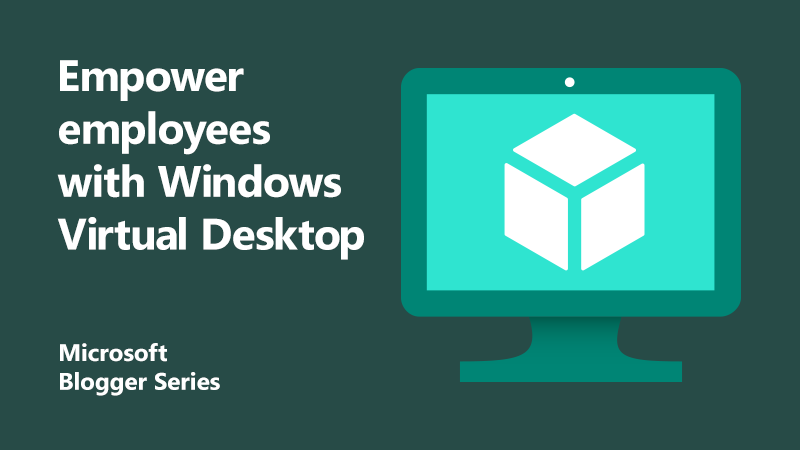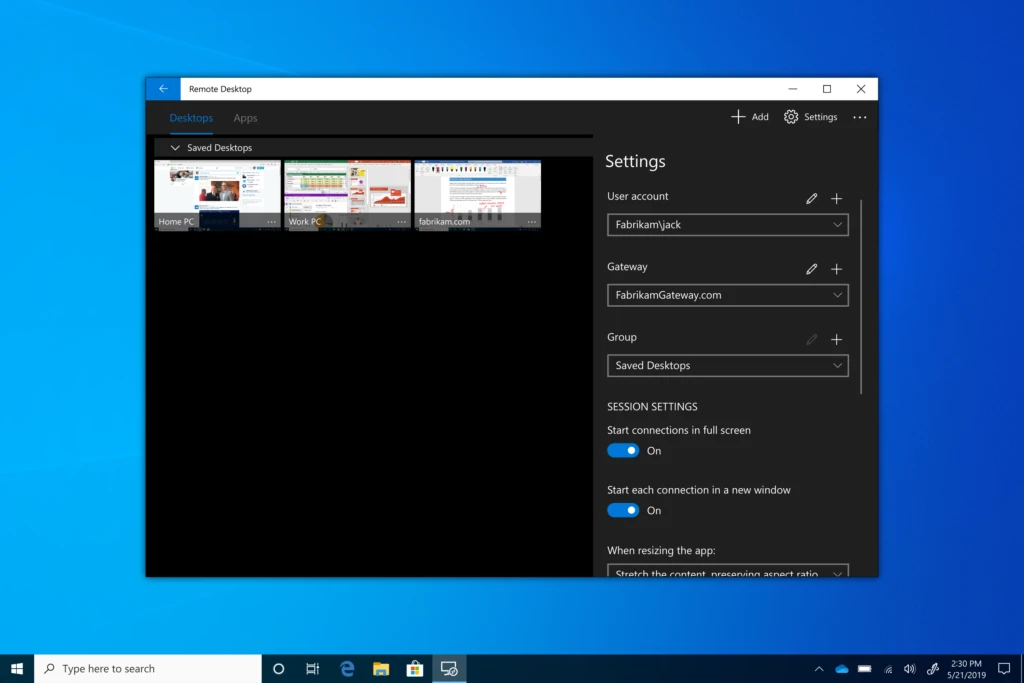
Empower employees for secure remote working with Windows Virtual Desktop
Delivering desktops through Virtual Desktop Infrastructure (VDI) is not a new innovation by any means. For well over a decade, it has been a common way for organisations to deliver desktops and applications to end users with benefits such as saving costs, streamlining image management, and enable secure remote work.
From a cost perspective, delivering desktops through VDI helps reduce the time it takes to provision new desktops. Easy and quick to set up, it reduces labour time and support costs as well as providing a faster time to value. Desktop virtualisation helps streamline the management of software assets because everything is centrally managed, stored, and secured. This makes it easier for your IT team to set up and provide users with desktops and apps, no matter where your users are located.
Virtual desktops also provide greater security to organisations as confidential company data can be safely accessed when employees are working remotely. This also means employee productivity is increased as workers are empowered to access data and apps from anywhere, at any time.
Despite the benefits of VDI, previous virtualisation host options left customers with two choices over the type of virtual machines that they can deploy to deliver desktops.
- Deploying a Windows Server Desktop experience to achieve the cost savings of multi-session
- Deploying single session in Windows 10.
The friction between user experience and cost, as well as the opportunity Azure as a platform poses were the triggers that led to the innovation of Windows Virtual Desktop.
Scale and optimise services
Windows Virtual Desktop delivers Windows 10 multi-session with optimisation for Office 365 Pro Plus, support for remote desktop services, and simplified virtual desktop management. Running on Azure means that organisations can benefit from the platform’s intelligent security posture. They will also achieve rapid scaling up and down of desktops, while only paying for the infrastructure used when they need it.
With Windows Virtual Desktop the Virtual Desktop management services (web access, gateway, brokers, servers, load balancing, diagnostics, etc) are provided and managed by Microsoft, reducing your need to manage on-premise infrastructure and ensuring the infrastructure is always updated and secure.

We are seeing two key drivers for customers exploring Windows Virtual Desktop in their own organisation:
1. Migration momentum: Migrating on-premise VDI estates
By migrating on-premise servers to Microsoft Azure, you’ll have increased infrastructure resiliency, scalability, and reduced costs. Migrating an on-premise VDI environment to leverage Windows Virtual Desktop allows customers to achieve these same benefits. This time, however, we’re talking about migrating desktop infrastructure.
By migrating on-premise VDI estates to Azure, customers are experiencing cost savings from multi-session Windows 10 and easier deployment of Office 365. They are achieving true cloud economics by being able to scale desktops up and down easily, only paying for what they use.
Workloads are protected with built-in controls and services in Azure, giving deep insights on your organisation’s security environment. Built using machine learning, behavioural analytics, and app-based intelligence, it helps identify and protect against rapidly evolving threats.
2. Discovering new possibilities – from disaster recovery to secure remote work
Many customers piloting and deploying Windows Virtual Desktop have no prior experience of using VDI. However, they believe the new scenarios Windows Virtual Desktop unlocks provide compelling use cases to explore virtualising desktops for the first time.
We have examples of customers using Windows Virtual Desktop for disaster recovery purposes. Other customers are using Windows Virtual Desktop for high performance computing. For example, it allows filmmakers to spin up a desktop with high GPU to render large videos, then putting the desktop back into the pool once it’s done. Paying for this additional compute when films need to be rendered is significantly cheaper than paying for expensive hardware 24/7.
One of the main reasons customers are using Windows Virtual Desktop is to enable secure remote work. With a virtual desktop, employees are no longer constrained to physical hardware or their location. Once they request a virtual desktop, it can be quickly administered based on their profile. Also, the Windows Virtual Desktop client is available on Windows, Android (in preview), Mac, iOS, and on a HTML 5 compatible browser, meaning your employees can access the apps and tools they need on any device, anywhere and at any time.

Windows Virtual Desktop truly delivers an enterprise grade desktop experience with Windows 10, powered by Azure, no matter where or when your employees are working. If you are considering a Windows Virtual Desktop pilot, reach out to your Microsoft Account Team or one of our Azure MSP Expert partners. Furthermore, we have a number of webinars running for customers and partners to learn more.
Find out more
Join a webinar to find out how to deploy Windows Virtual Desktop
Discover Windows Virtual Desktop
About the author
 Kirsty is Microsoft UK’s Windows Virtual Desktop Lead. Kirsty started her career at the University of Oxford (Christ Church) where she studied Economics and Management. She has since joined Microsoft and worked with customers in a wide range of industries as a Commercial Executive and more recently in the Azure Business Group.
Kirsty is Microsoft UK’s Windows Virtual Desktop Lead. Kirsty started her career at the University of Oxford (Christ Church) where she studied Economics and Management. She has since joined Microsoft and worked with customers in a wide range of industries as a Commercial Executive and more recently in the Azure Business Group.


